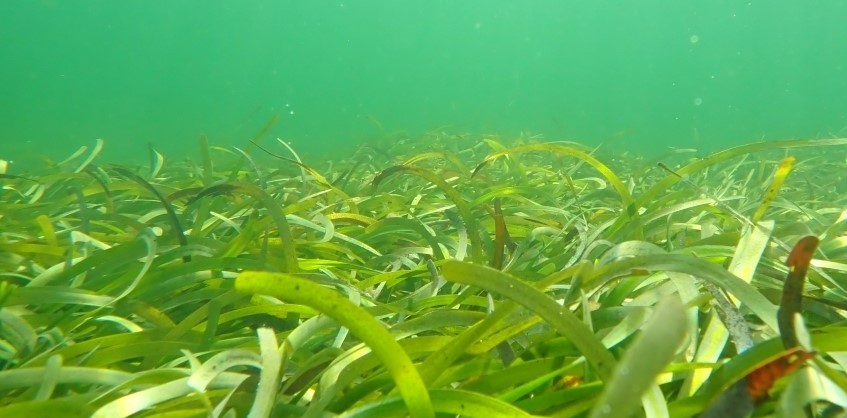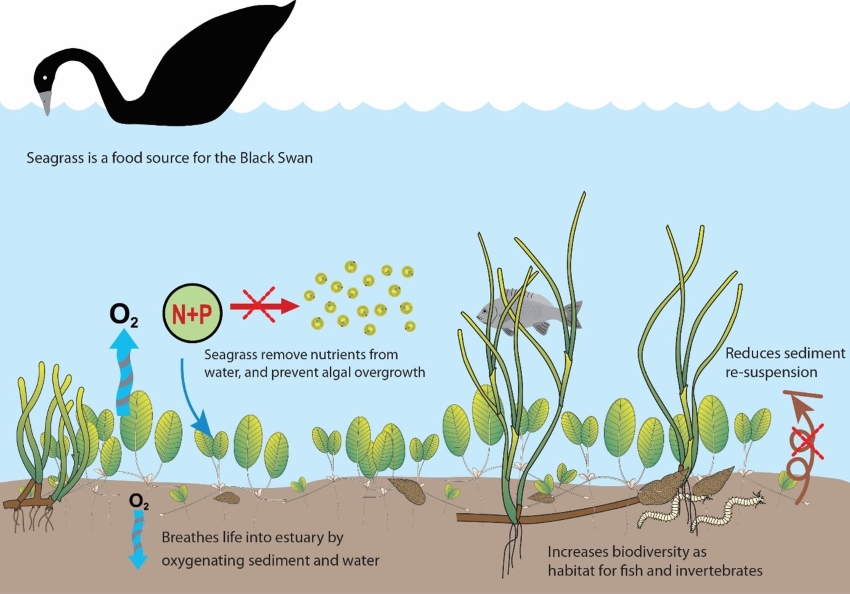Seagrasses are rooted, aquatic flowering plants, which grow and live completely underwater.
These plants perform a number of important ecological functions in both estuarine and marine systems and generally their presence in a system is considered a good thing.
The vegetation influences the quality of the water and sediments by taking up nutrients and reducing sediment re-suspension. They also provide a refuge for macroinvertebrates and fish, and food for fish and wading birds, such as the Black Swan.
Seagrass condition can be considered an indicator of estuary condition. The distribution and species present within an estuary are dependent on a range of conditions such as water movement, sediment condition, fresh water supply and connectivity to the ocean. These aspects vary from estuary to estuary, so seagrass communities differ between estuaries.
There are common factors that influence the distribution of aquatic plants. These include changes in light, nutrient availability, grazing pressure, flood events and direct physical disturbance by humans.
Loss of seagrass habitat is generally equated with ecosystem decline and is most frequently linked to eutrophication (nutrient and organic loading) from the catchment.
Phytoplankton blooms and excessive growth of macroalgae are symptoms of eutrophication. Both phytoplankton and macroalgae reduce light availability for seagrass growth which in extreme cases can lead to seagrass loss.
We assess seagrass communities by measuring changes in the species composition, distribution and cover of the seagrass communities in the estuary. We have also identified more complex indicators such as productivity, reproductive success and tissue nutrient content to describe the resilience of seagrass. This information is important as it tells us if seagrass habitats can recover after a damaging event.
Common species of seagrass in Western Australian estuaries include: Halophila ovalis, Halophila decipiens, Ruppia megacarpa, Zostera muelleri and Posidonia sinuosa and Posidonia australis.
Read more about seagrass on our Healthy Estuaries WA website.




